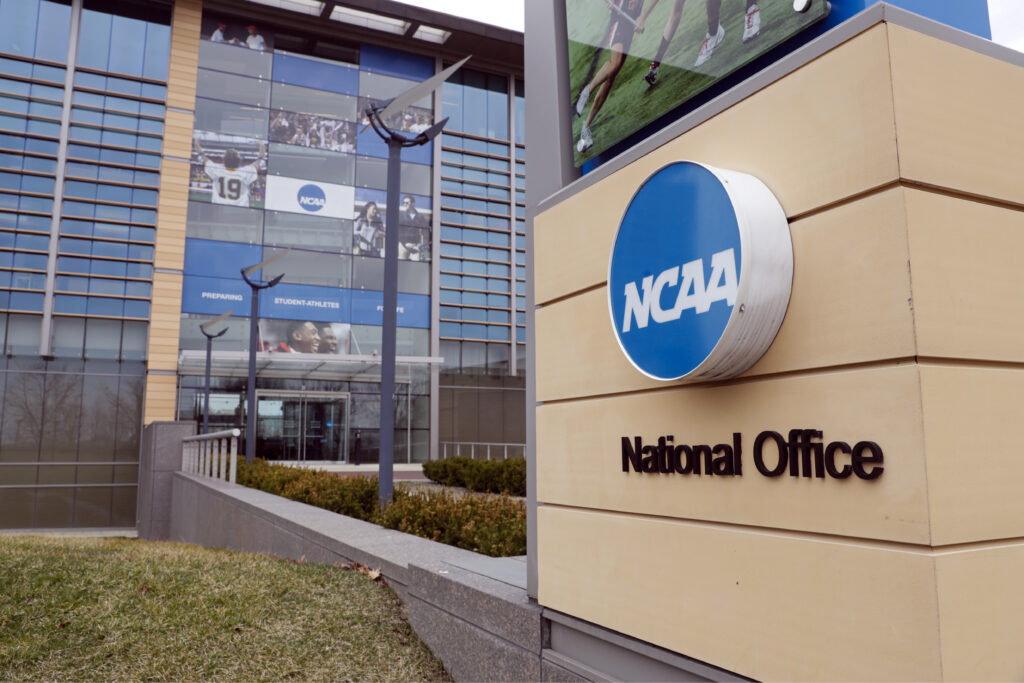On June 30, 2021, the National Collegiate Athletic Association (NCAA) adopted the Name, Image, and Likeness policy.
College athletes can now profit off of their name, image and likeness with the school they are attending within the new regulations and provide guidance to college athletes, incoming recruits, their families and the member schools of the NCAA. In other words, all college athletes for all sports can use themselves as a “brand” to receive sponsorships and financial compensation as long as it falls within the bylaws of the state and conference of the school.
According to the bill, collegiate athletes have the ability to “engage in NIL activities that are consistent with the law of the state where the school is located”. The policy allows university boosters and donors to secure business deals for athletic departments or for one specific student-athlete that is being recruited by the school. Businesses approach the school about a certain student-athlete that they want to advertise their brand or company and athletes can now hire agents to help them secure NIL deals and compensation.
A prime example of how an athlete can utilize the NIL bill is Quinn Ewers. Ewers was the number one rated quarterback in the 2022 class according to ESPN’s recruiting rankings. The Texas prospect was originally committed to Texas before reclassifying himself to the 2021 class. Once he was reclassified, he decommitted from Texas and accepted a scholarship to play football at Ohio State University. While at Ohio State, Ewers signed a three-year, $1.4 million contract with GT Sports Marketing. In exchange for autographs, Ewers made over one million dollars as a freshman in college without ever playing a down of football for Ohio State. He then entered the transfer portal at the end of the 2021 season and transferred back to Texas where he was originally committed in high school.
The majority of NIL deals occur on the Division I level. Schools such as University of Alabama, University of Georgia and Ohio State University. Bigger schools with larger sports programs have more accessibility and funding to recruit and allocate their resources.
But what about the smaller schools competing on Division II and Division III levels? There has not been much noise buzzing about athletes at UWG receiving NIL deals according to Matt Cooke, UWG’s Assistant Athletic Director for Events, Marketing, and Media Services.
“We have a handful of student-athletes who have publicly announced they are taking NIL deals but nothing has occurred yet,” says Cooke.
The market here in Carrollton at a D-II school compared to Athens, Atlanta or Tuscaloosa is almost nonexistent. The bigger schools will pursue the best athletes available but now in the offseason, more athletes are entering the transfer portal during the off-season. Schools such as University of Georgia, Georgia State and other well-known schools are seeing an increase in transfers from student athletes.
“Our goal is to educate student-athletes on the business side of things. If an athlete has a deal, it is our job to support our athletes and we want to help give them the tools to secure their money,” says Cooke.
The future of college athletics has changed; new expectations will affect how students play with the NIL bill intact, especially at the smaller schools like UWG.
You may also like
-
Ingram Library Works to Find Balance Between Physical and Digital Resources in a World so Dependent on Technology
-
UWG Welcomes Alum Brian Nunez as Keynote Speaker for 41st Annual MAP Awards
-
UWG’s Student Activities Council Hosts the Spring Festival of Colors, Celebrating Culture and Community
-
Georgia Power Donates $25,000 to UWG’s Student- Run PR Firm, bluestone
-
Le Mépris and the Horizons UWG French Film Festival: Living West
